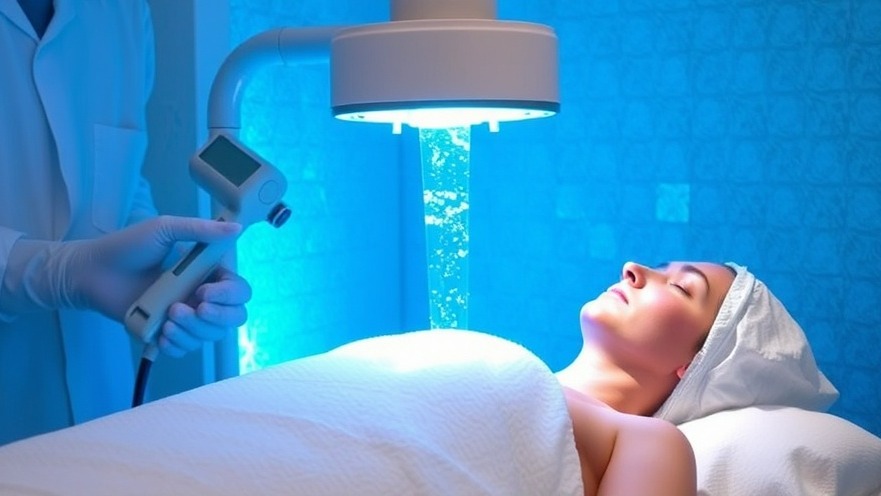
Cryotherapy: A Promising Solution for Neuropathy in Breast Cancer Patients
Recent insights into the application of cryotherapy provide a beacon of hope for breast cancer patients grappling with the debilitating side effects of chemotherapy. The gravity of chemotherapy-induced peripheral neuropathy (CIPN) is underscored by new research from the George Washington University Cancer Center, which reveals that cold therapy significantly mitigates nerve pain associated with common chemotherapy agents like paclitaxel and nab-paclitaxel. This novel approach could revolutionize patient care by addressing a key quality-of-life issue for those undergoing cancer treatments.
Understanding Cryotherapy
Cryotherapy involves the localized application of extreme cold to specific parts of the body, a technique that has now made its way into oncology with promising results. The study conducted by Kumar and colleagues found that this method resulted in a remarkable 55% reduction in the incidence of neuropathy symptoms among patients treated with paclitaxel and nab-paclitaxel. This form of therapy can create a targeted, controlled environment that inhibits nerve damage, a common complication faced by cancer patients due to the neurotoxic nature of chemotherapy medications.
How Cryotherapy Works
The mechanism by which cryotherapy alleviates nerve pain lies in its physiological impact on blood circulation and nerve function. By inducing vasoconstriction, cryotherapy reduces blood flow to areas susceptible to injury, thereby minimizing the extent of nerve damage. The studies show patients utilizing ice gloves and socks during chemotherapy reported significantly less cold sensitivity, numbness, and pain compared to those who did not use cryotherapy.
Statistical Insights and Comparative Studies
In a meta-analysis assessing the utility of cryotherapy for preventing CIPN, the statistics corroborate its effectiveness. Notably, another study highlighted in Breast Cancer Research and Treatment paints a similar picture of success, with cryotherapy being associated with improved quality of life outcomes post-treatment. These findings align with previous research discussed in the 2017 article published in The Journal of the National Cancer Institute, which noted decreased sensitivity to tactile stimuli and a quicker recovery of dexterity in patients who underwent this treatment.
Practical Challenges and Considerations
Despite the promising outcomes, several challenges remain in implementing cryotherapy as a standard practice during chemotherapy. Treatment centers vary in their capabilities to provide cryotherapy equipment like frozen gloves and socks. Patients may need to discuss options with their healthcare providers to determine the feasibility of integrating cryotherapy into their treatment plans. These conversations are essential to ensuring patients are informed about the latest advances and can advocate for their care effectively.
Future Directions and Insights
Looking ahead, there is a growing call within the medical community for comprehensive trials that will explore optimal cryotherapy protocols, including the most effective duration and timing relative to chemotherapy administration. As we advance our understanding of the biological mechanisms underlying CIPN, integrating innovative therapies like cryotherapy could not only safeguard patient quality of life but also enhance adherence to chemotherapy regimens, ultimately improving overall treatment outcomes.
Empowering Patients through Awareness
For concierge health practitioners engaged in patient care, staying abreast of emerging therapies such as cryotherapy can significantly influence treatment discussions with breast cancer patients. The insights gathered from recent studies underscore the importance of providing an individualized approach to cancer treatment that incorporates innovative methods for managing side effects. Cryotherapy may emerge as a pivotal tool in this regard, allowing healthcare professionals to offer comprehensive care tailored to the specific needs of individuals.
In conclusion, as the narrative around cryotherapy continues to evolve, clinicians are encouraged to consider the viability of this treatment modality. Integrating cryotherapy into care strategies not only addresses the considerable challenge posed by CIPN but also positions practitioners as informed allies in their patients' cancer journeys. For healthcare practitioners eager to improve patient outcomes, remaining informed about advancements like cryotherapy will enhance their ability to guide treatment decisions effectively.
 Add Row
Add Row  Add
Add 




Write A Comment